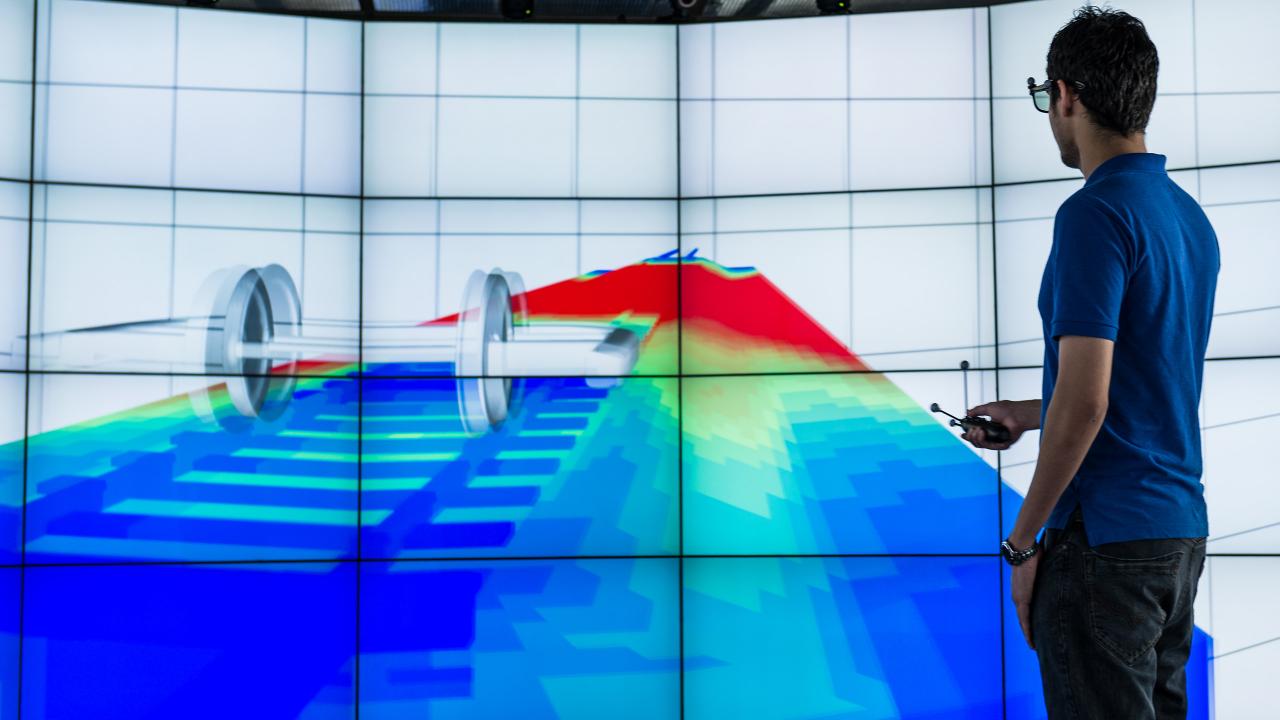|
|
||||||||||||||||||
High-Speed Trains
Researchers: Andrew Johnson, Jason Leigh, Krishna Bharadwaj, Vaibhav Govilkar, Electronic Visualization Laboratory; National University Rail (NURail) Center
Funding: U.S. Department of Transportation Participants stand inside virtual train tracks in the CAVE2™ System to observe distortion as high-speed trains roar past. This visualization of fundamental dynamics phenomena related to high-speed rail operations was done in collaboration with the National University Rail (NURail) Center - which consists of researchers at University of Illinois Urbana-Champaign, University of Illinois at Chicago (UIC), Massachusetts Institute of Technology, Michigan Tech University, University of Kentucky, University of Tennessee, Knoxville, and the Rose-Hulman Institute of Technology - and is funded by the U.S. Department of Transportation. Understanding track structure movements, liquid sloshing, and wheel / rail contact locations are among several transportation research areas that require sophisticated virtual-reality tools such as the CAVE2 System. Visualization by the UIC Electronic Visualization Laboratory (EVL). EVL’s OmegaLib software is used to display the 3D model in the CAVE2. Credits Electronic Visualization Laboratory (EVL) at the University of Illinois at Chicago and the National University Rail (NURail) Center. Email: spiff@uic.edu Date: September 1, 2012 - Ongoing |